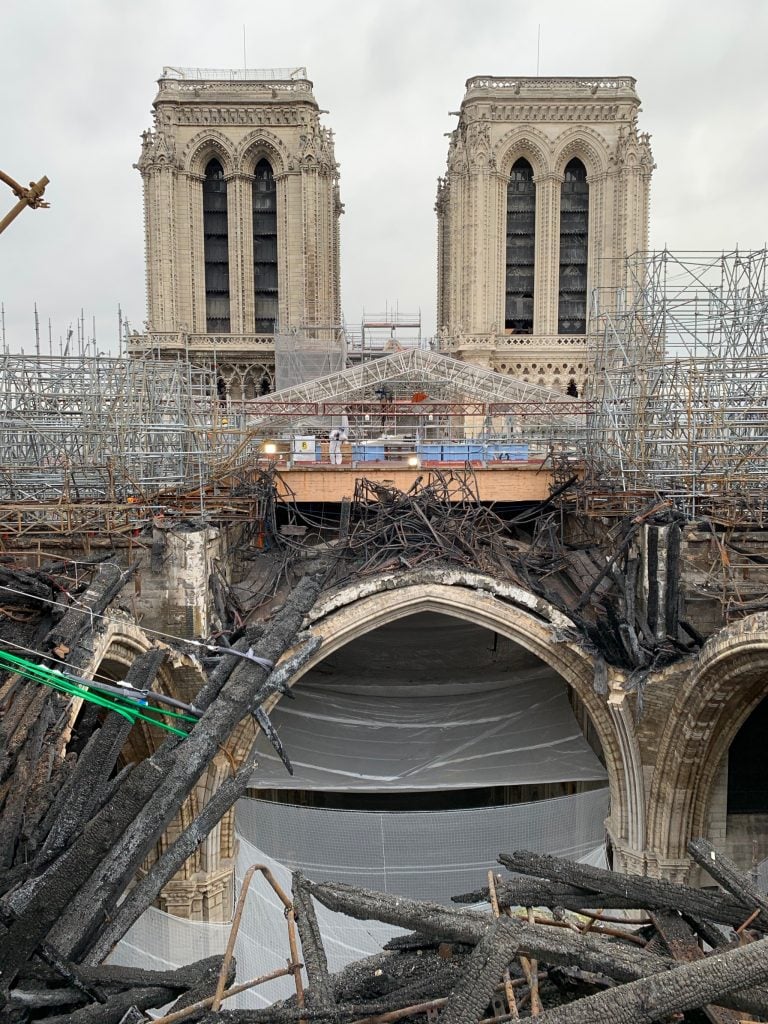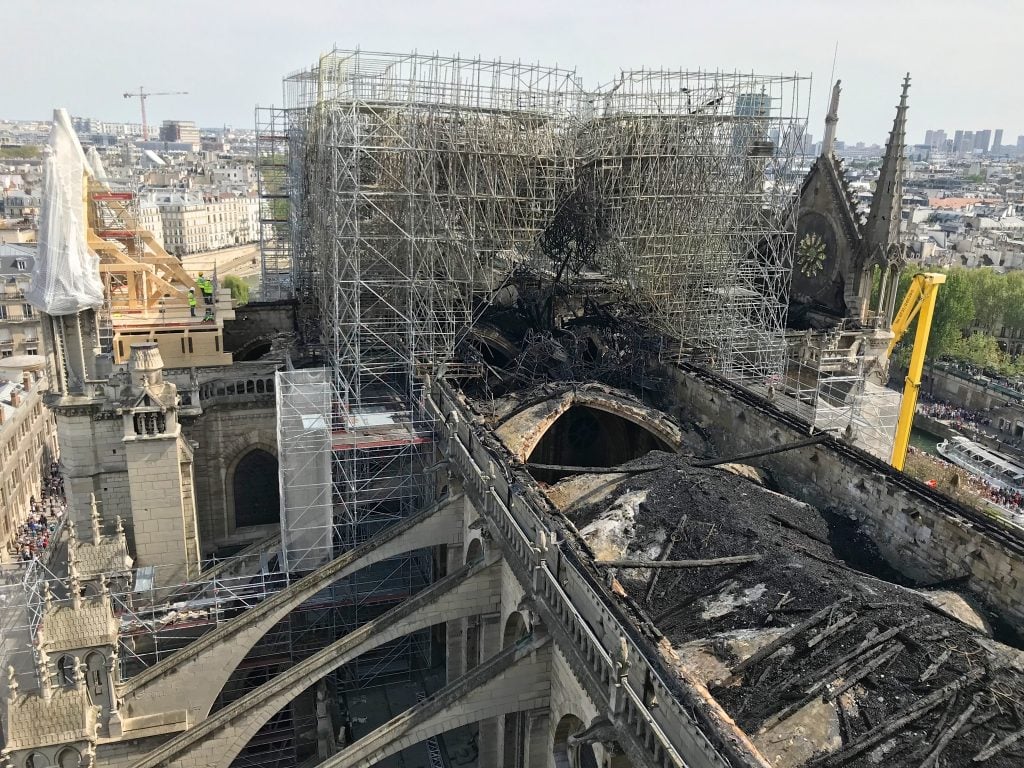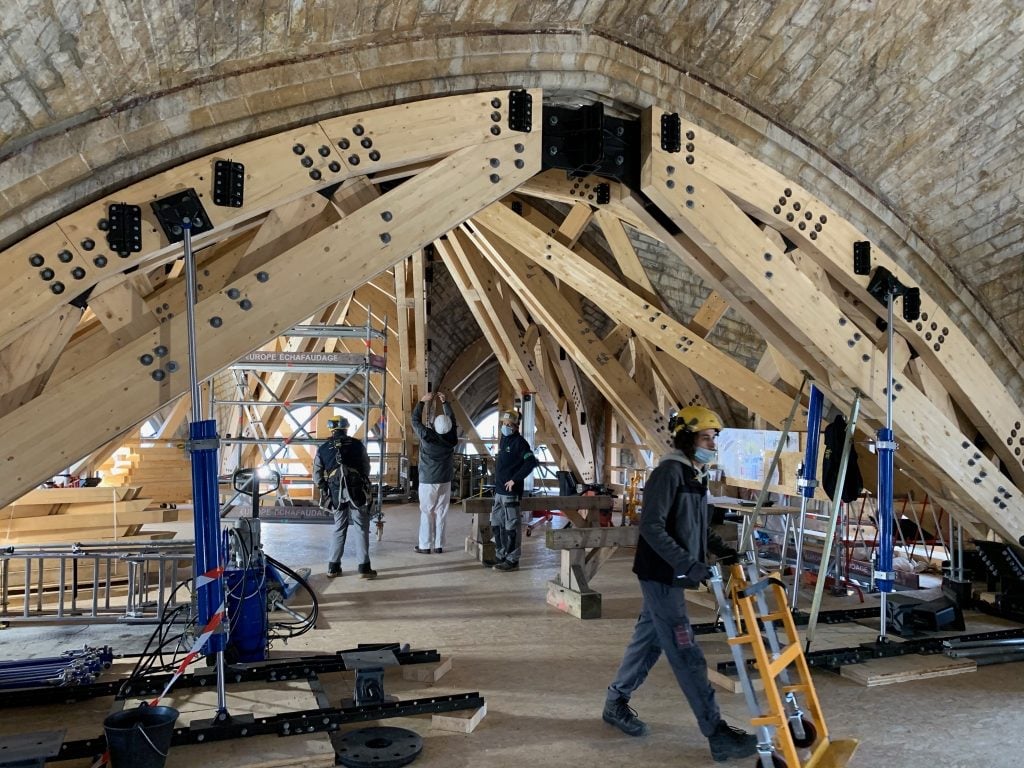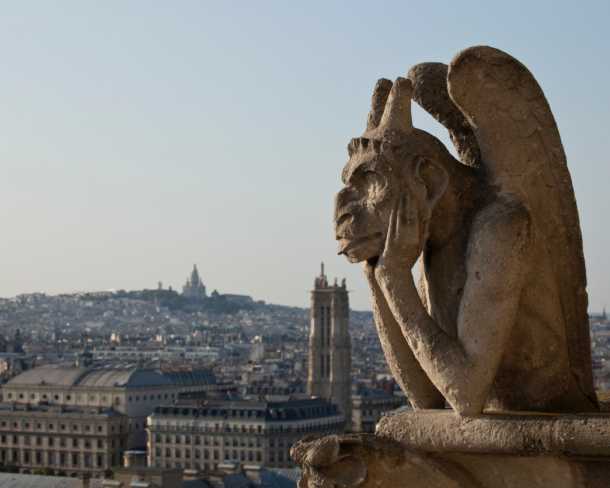Art World
Would You Like to Adopt a Gargoyle? Notre Dame Is Raising Funds to Restore Individual Artworks Damaged in the 2019 Fire
As the square around the cathedral closes due to lead pollution, Friends of Notre Dame takes a new fundraising tack.

As the square around the cathedral closes due to lead pollution, Friends of Notre Dame takes a new fundraising tack.

Sarah Cascone

More than two years after a fire nearly destroyed Paris’s beloved Notre Dame Cathedral, the historic site is still rebuilding. Now, a group supporting the effort is offering a novel way to help. Why not adopt your very own gargoyle, or a statue of Saint Paul?
The U.S. nonprofit Friends of Notre Dame de Paris is letting the public donate directly to sponsor some of the cathedral’s individual artifacts. To date, 10 artworks have been fully funded, all of them sculptures, at around $10,000 each.
Many are the work of Eugène Viollet-le-Duc, the architect who led the 1844 restoration of the church. He individually named the grotesques that sit sentinel between the cathedral’s two towers, decorative objects that lack the drainage function of gargoyles. He was also responsible for the spire that came dramatically crashing down during the fire, itself a replacement for a fallen medieval structure.
The new fundraising project aims to restore momentum after unanticipated delays, including the mandated closure, on Tuesday, of the square in front of the cathedral due to a high concentration of lead particles. (The particles came from the cathedral’s roof, which collapsed during the blaze on April 15, 2019.)
This lead contamination—not to mention the pandemic—has complicated the already-complex efforts to rebuild the cathedral, which required careful reinforcements to keep the fire-weakened stones from tumbling down.

The roof of Notre Dame Cathedral in Paris after the fire. Photo courtesy of Etablissement Public pour la restauration de Notre Dame de Paris.
Nevertheless, “the target is still to reopen Notre Dame to believers and visitors before the end of 2024, even though a full restoration of the cathedral will need several more years,” Michel Picaud, president of Friends of Notre Dame de Paris, said in a statement.
Founded in 2017, Friends of Notre Dame originally worked to support a much smaller-scale restoration project on the cathedral. In the aftermath of the fire, it found itself responsible for helping fund a massive rebuilding effort.
An outpouring of donations flooded in from around the globe, but some of the €825 million ($967 million) in pledged funds have been slow to arrive, particularly from billionaire donors who may never honor their commitments. Friends of Notre Dame instead has focused its efforts on smaller donors—in the initial burst of funds, 46,000 people and 60 businesses gave $39 million.

Interior braces supporting the vaults at Notre Dame Cathedral in Paris during restoration work. Photo courtesy of Etablissement Public pour la restauration de Notre-Dame de Paris.
Now, the group is going the sponsorship route. Still awaiting donor support are the paintings, which include works by Charles Le Brun, Jean Jouvenet, and Aubin Vouet (around $100,000 each). You can also donate to restore the 1833 choir carpet ($120,000) and the gilded copper reliquary of Saint Genevieve ($6,000).
Almost certainly the priciest object one can help sponsor is the cathedral roof, which has thus far raised only $2,309 toward a $2.08 million goal. The wooden lattice supporting the lead roof, known as the forest and dating to the 1200s, will require some 1,000 trees to rebuild, all at least 150 years old.

The restoration of this grotesque, Stryge, has been fully funded. Photo courtesy of Friends of Notre Dame.
You can browse all the objects in need of restoration at restorenotredame.org, which presents the artifacts as “piece[s] of the puzzle.”
“You also get a description of each of the artworks, so you can learn a lot about Notre-Dame, and you can play a little bit,” Picaud told Mental Floss.
Meanwhile, the city will once again attempt to decontaminate the cathedral square, cleaning it and reopening once “all readings are back to sufficiently low levels,” the police department told Agence France Presse.